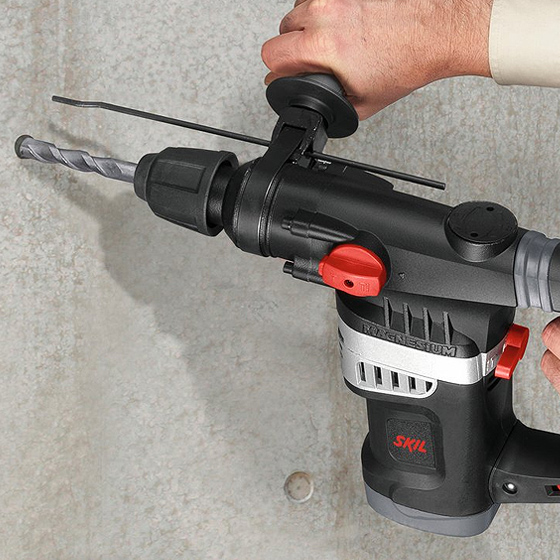Any DIY project will require a good power drill and there are many models available in the market. Proper drilling tool can save time and we will be able to drill holes into concrete, metal, wood, wall and other materials. Power drill can also be used to drive bolts and screws. There are different types of drills that we can choose:
- Standard drills: Standard electrical drills are appropriate to make holes on wood and metal. They are usually compact and normal with power input of 500W. However, we could still use low-power drill for making small holes on softer materials, such as less solid types of wood. For more frequent uses and larger holes, we should consider investing on models with more powerful motor. We also need to check the chuck size and smaller drills could support bits up to 10mm in diameter.
- Hammer drills: Hammer drills are nearly similar to standard electrical drills. However, these drills use hammering actions and this is more appropriate for drilling masonry. When needed, we may disengage or engage the hammer action. These drills are relatively affordable, but more delicate than standard electric drills. Hammer drills have two cam plates and the energy transfer for making holes is less efficient. If the drill fails to penetrate a harder material, it will vibrate much harder on our hand. When it happens, the cam may wear out quicker. Hammer drills with traverse motors and large cam can be particularly crude and the energy that is delivered can be highly variable. When the surrounding vibrates too violently, unintended collateral damages could happen.
- Screw guns: These electric screwdrivers should be useful for applying hexagon-headed Tek screws and normal screws for metal and plasterboard cladding. It has specially-designed that self-guides to fixings. For special screws, like collated screws, we may need special type of drill that has auto-loading mechanism. Screws can be loaded into the drill through s trip and then fed sequentially onto the bit.
- Drill press: It is also known as bench drill, pillar drill or pedestal drill. This kind of drill is bolted to the floor or mounted on a stand. It is usually consisted of a base, table, column, drill head and spindle. It could be powered with induction motor. It may have a set of handles that radiate from the central hub. When we turn the handle, the chuck and spindle will move vertically. We can also adjust the table vertically and it is usually moved by a pinion and rack. However, there are models that required operators to re-clamp and lift the table into proper position. Drill press offers a number of benefits compared to hand-held drills. It also takes less effort to apply drill to an object. There’s also a significant mechanical advantage due to the use of level to move spindle and chuck. We can alter the speed by moving the belt manually across the stepped pulley arrangement. Some newer models mat combine stepped pulley system and variable-speed motor.
